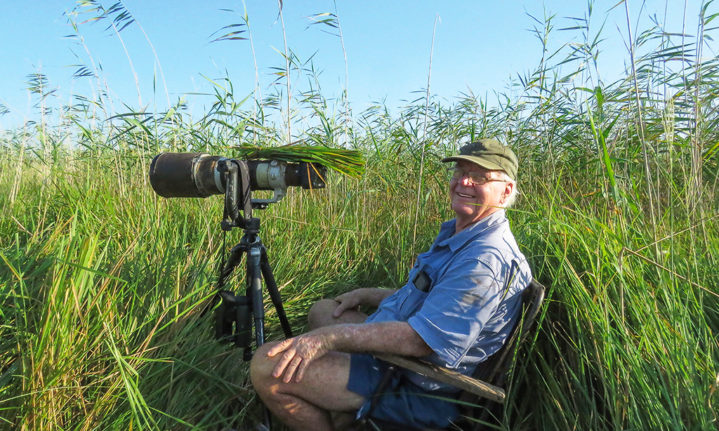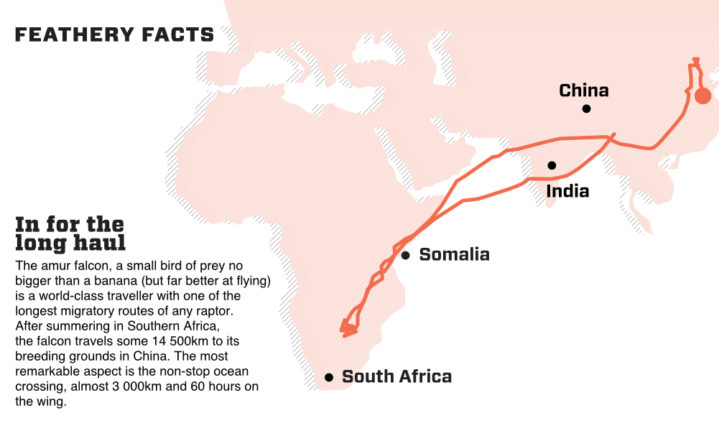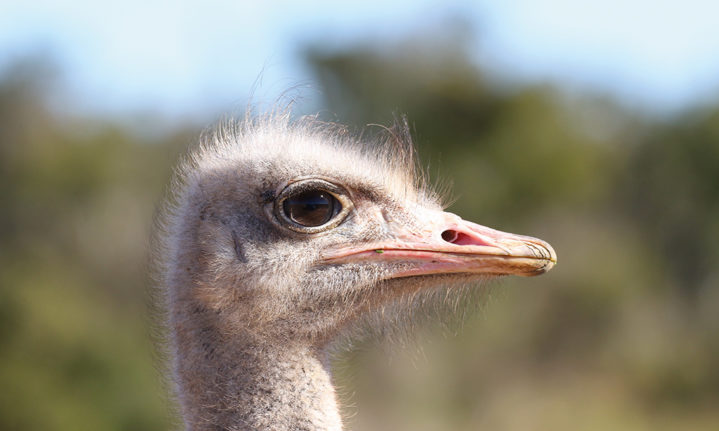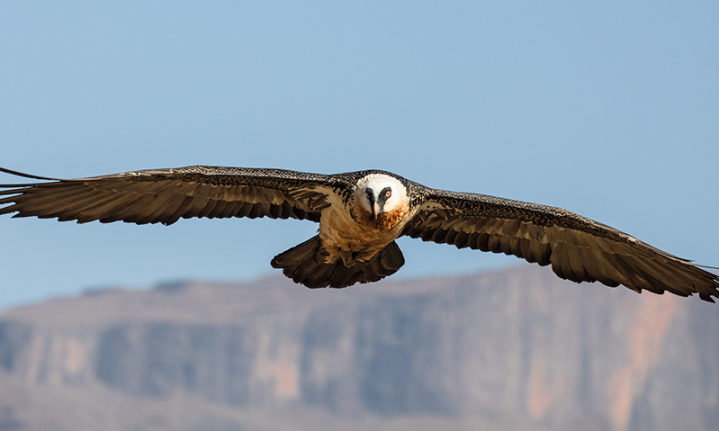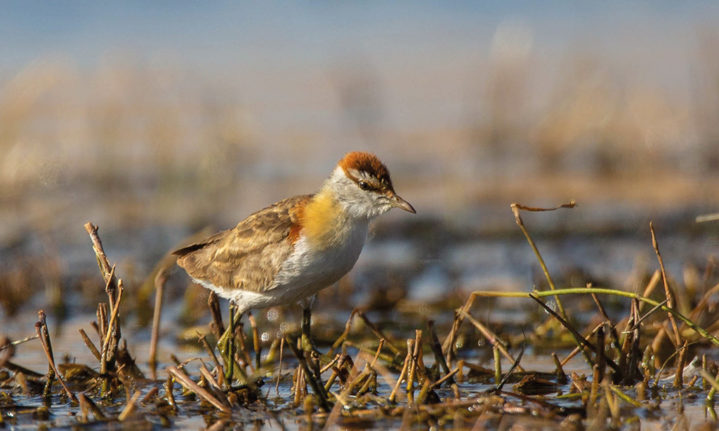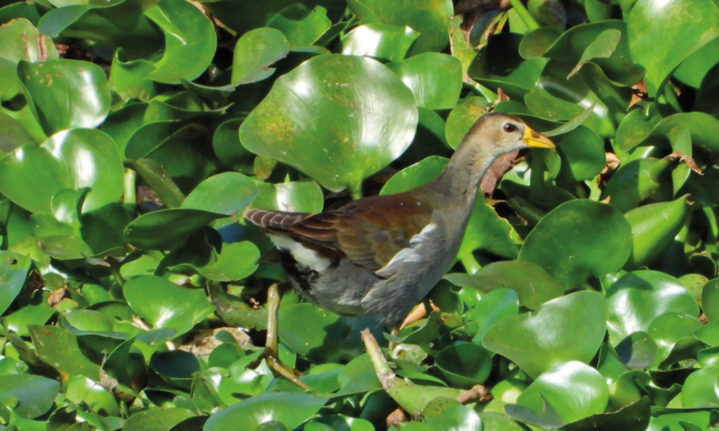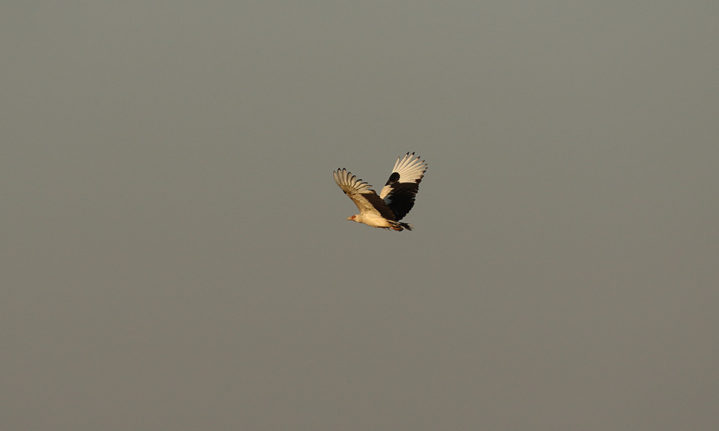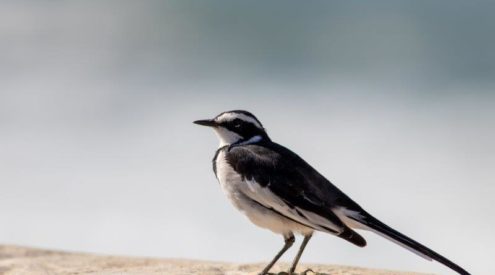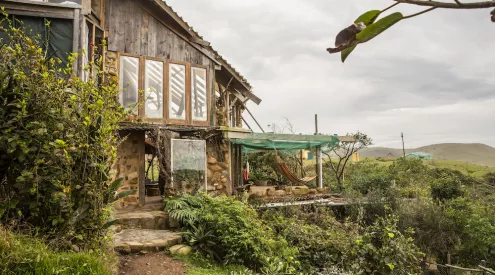An interview with one of South Africa’s most-renowned ornithologists morphed into an encounter with one of South Africa’s rarest birds, for CATHERINE HOFMEYR

A rare black coucal about to deliver a Hyperolius frog to his third brood of the season. (Photo Hugh Chittenden)
Sorry, I can’t see you this morning. I’m busy monitoring a breeding black coucal. Come this afternoon.’ The brusque voice on the phone belonged to Hugh Chittenden, co-author of the first (2007) and updated Roberts bird guides and other birding titles.
‘An amazing thing has happened,’ an upbeat Hugh enthused, welcoming me to his home in the leafy holiday village of Mtunzini later that day. ‘We’ve got our third successive black coucal brood from this single pair this season.’ Black coucals, he suggests, are in the top 20 of rarest breeding birds in South Africa. They’re also polyandrous. The female simply lays her eggs, then leaves to look for a new partner. The males alone incubate and rear the chicks. Hmm, she may have something there…
With no other potential mates in the area, this pair clearly made the most of the situation. And an ecstatic Hugh observed, documented and photographed the unusual breeding behaviour over a period of three months – and applauded the mammoth feeding task of the male (he published a detailed account in the May/June issue of African BirdLife).
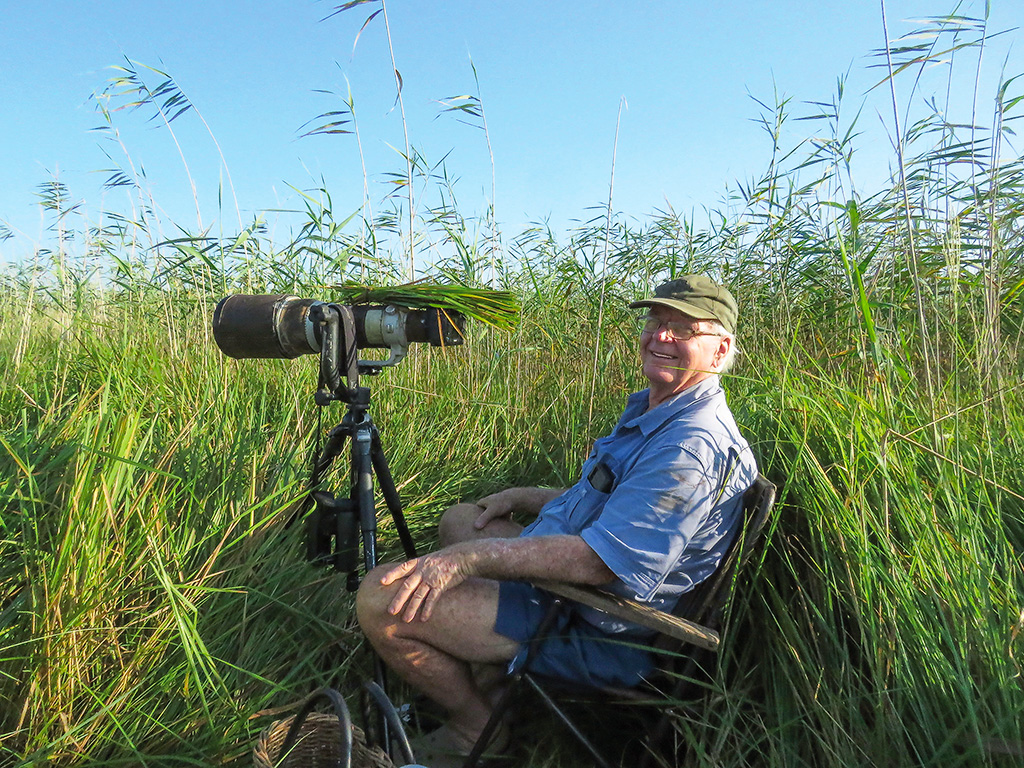
Hugh in his happy place – behind the lens and hidden in the waist-high grasslands of Mtunzini, one of his top birding hotspots countrywide (Photo Annette Gerber).
Studying and photographing birds is what this self-taught ornithologist has been doing for the last 50 years. Before retiring, Hugh owned a nursery in Eshowe. Knowledge of plants and trees gives one a far greater understanding of bird behaviour, he says. Ask Hugh and he’ll tell you he’s a retired horticulturist with a birding hobby. However, in bestowing him with an honorary doctorate in 2012 for his contribution to ornithology, the University of KwaZulu-Natal called his knowledge ‘encyclopaedic’. And so it is.
In his office, Hugh proudly showed me a 1940 copy of Austen Roberts’ Birds of South Africa, which he got for his 12th birthday. Was that the start of his interest in birds, I wondered? ‘Yes, probably,’ said Hugh, ‘but birding in the ‘60s and ‘70s was a lot more difficult than it is today. There are so many informative books to choose from now and, of course, all the apps that are available on cell phones, with excellent song, and calls one can refer to.’
An honorary doctorate, five bird-book titles, countless papers and photos published locally and overseas is quite an achievement. Hugh is also currently chairman of the John Voelcker Bird Book Fund, which oversees ongoing Roberts bird book publications.
Finally, Hugh asked the question I was hoping for: ‘Would you like to see the coucal?’
So off we went bouncing along the potholed river road in Hugh’s bakkie to his stakeout in the moist, waist-high, almost sea level grasslands on the outskirts of Mtunzini. By and by ‘super dad’ arrived, hopping about in the stems before disappearing down the hidden entrance to the nest. A black coucal, close up, in the delightful company of one of SA’s top birders. That was a lifer for me, for sure.
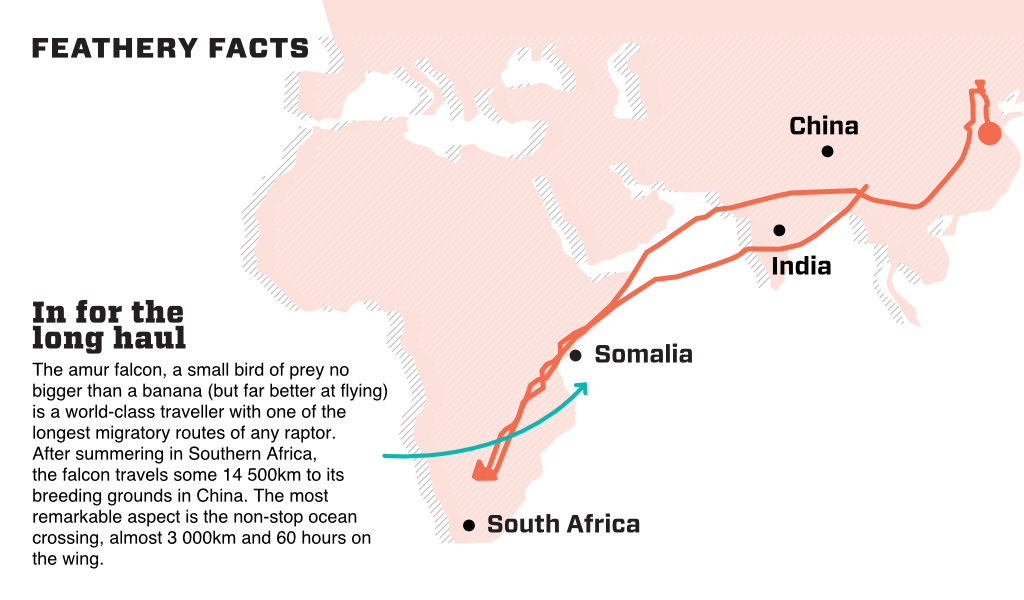
Eye spy with my enormous eye
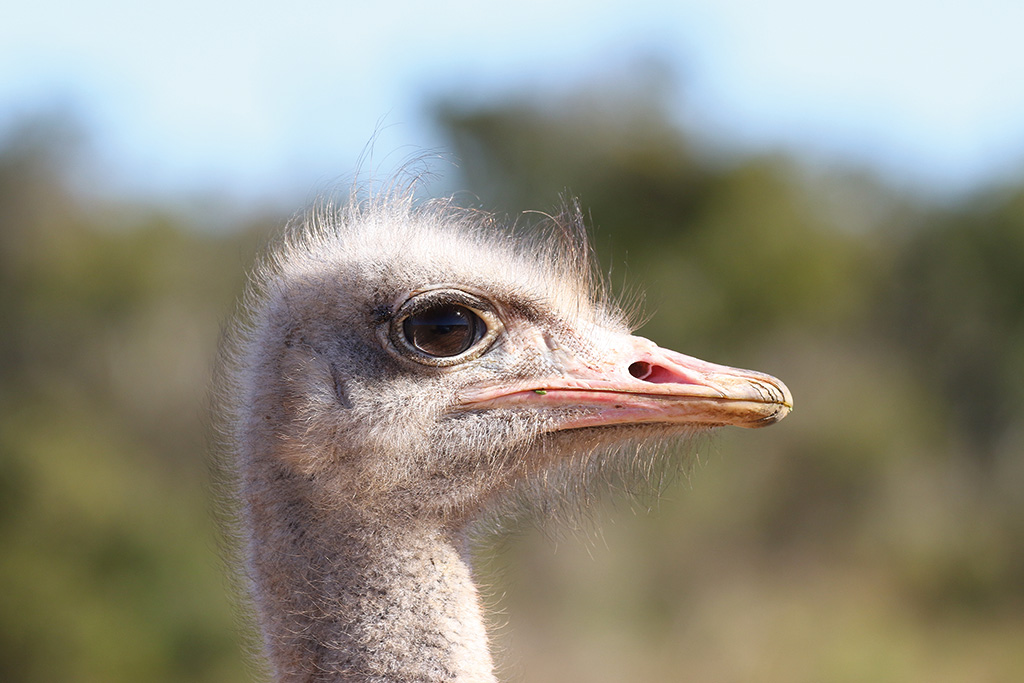
The ostrich has the largest eyes of any land animal. In fact, an ostrich’s eye is bigger than its own brain.
Who you calling a rooinek?
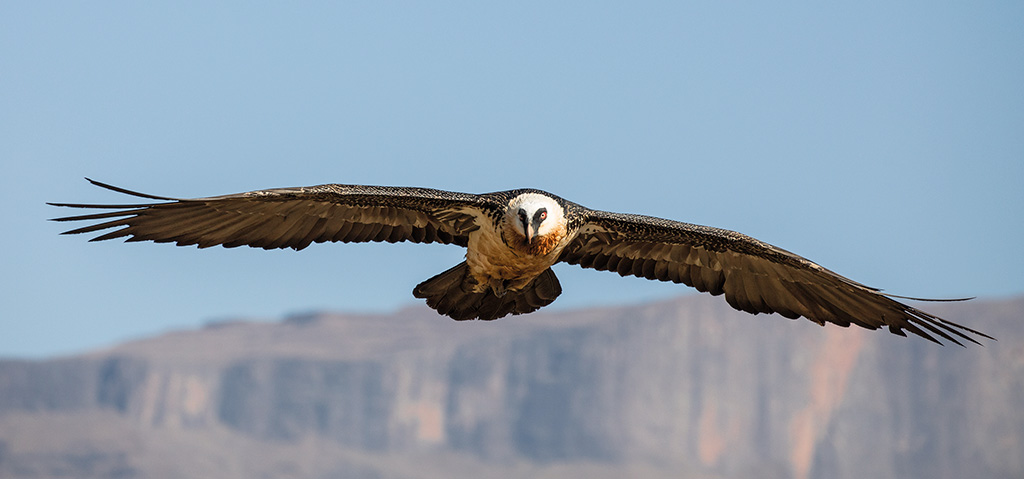
Bearded vultures purposely dye their feathers by ‘bathing’ in red soil or mud. Some believe they do this to show their dominance to other birds. Another hypothesis is that the iron oxides in red soil kill bacteria which they are likely to come into contact with during scavenging.
Remarkable Sightings
Grey-headed albatross
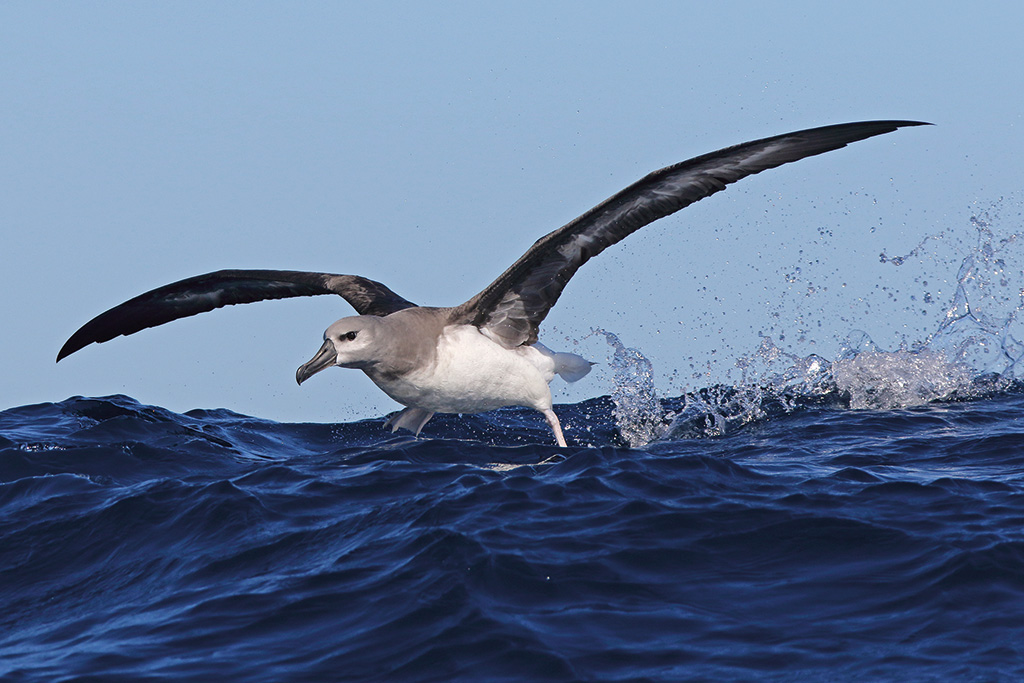
Seen At: Fishing grounds, south-west of Cape Point
The last one to be reported anywhere in Southern Africa was off Cape St Francis in July 2017. Prior to that, all the other recent records came from the waters south-west of Cape Point with single birds seen in June 2016, June 2012, August 2011 and May 2010. In other words, this latest individual is only the 6th grey-headed Albatross to be seen in Southern Africa in the last decade! Albatrosses are exceptional birds and anyone with an interest in birds should make an effort to see these graceful avians gliding effortlessly around the open seas. One could then understand the words of the great ornithologist, Robert Cushman Murphy, when he wrote: ‘I now belong to a higher cult of mortals for I have seen the albatross.’
Trevor Hardaker
Lesser jacana

Seen At: Swartberg region, Western Cape
I was very fortunate to twitch this lesser jacana near Swartberg in the Kokstad area of KwaZulu-Natal. This is a rare species for KZN and a very unusual sighting in the south interior of the province.
Zach Simpson
Lesser moorhen
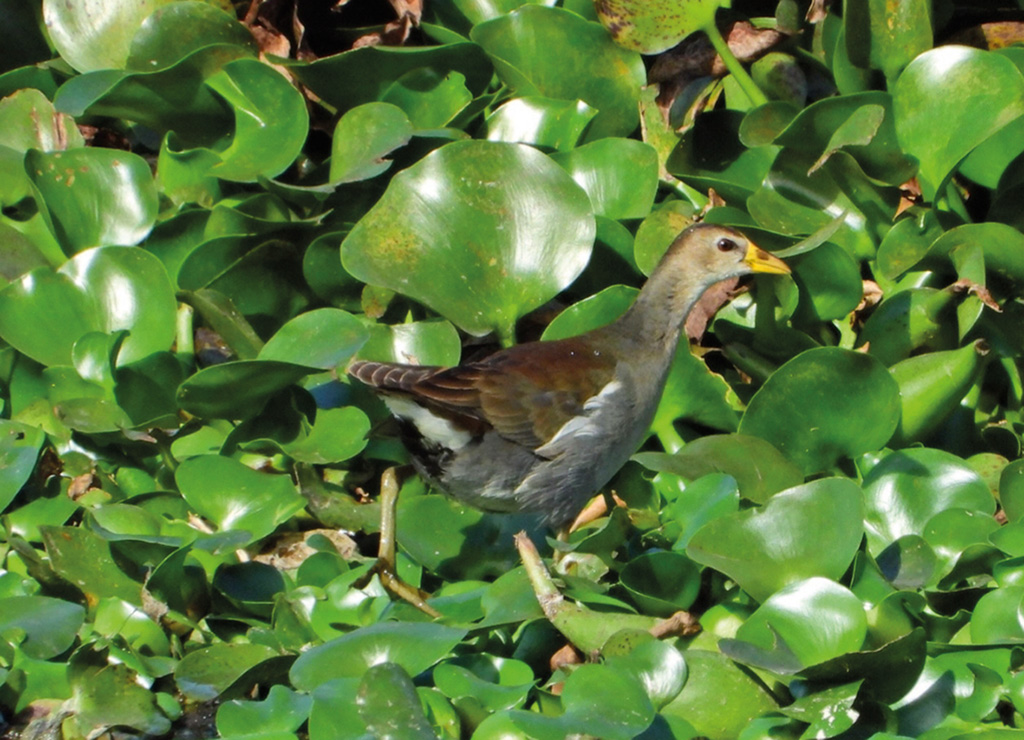
Seen At: Mondi Canal, Amanzimtoti, KwaZulu Natal. It is one of those sightings that will always be remembered. Especially in our area of KZN, it’s uncommon for them to be found in the winter time. This bird can easily be mistaken for a juvenile common moorhen. Karen Diederiks
Palm-nut vulture
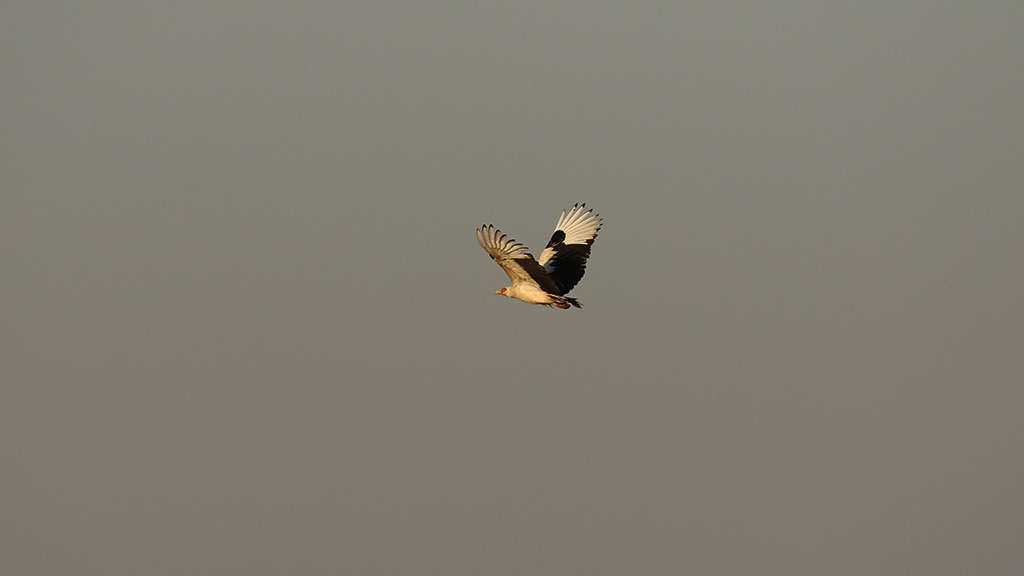
Seen At: Komga composting facility, Eastern Cape
On our way back from Collywobbles in the Eastern Cape, we were pleasantly surprised to see a pair of palm nut vultures at the Komga Organic Fertilizer site. This site has produced some incredible bird sightings like the black kite, lesser spotted, tawny, steppe and Wahlberg’s eagles, and of course these palm-nut vultures. Stewart MacLachlan










